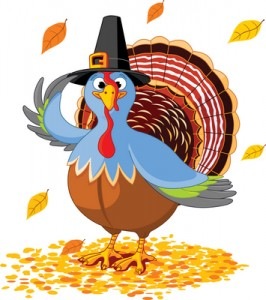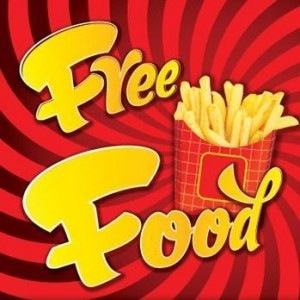 How Do Turkeys Cross The Road?
How Do Turkeys Cross The Road?
Where I live, I often have to stop my car and wait for the wild turkeys to cross the road. I’m not kidding. They start climbing over a stone wall from a wooded area one after another. Gorgeous, they’re not. And they don’t cross in a timely fashion, either. They’re sort of in a line but sometimes one shows an independent streak and turns around to look for the others. Quite a sight – and, quite annoying when I’m in a hurry having seen this parade many times before – although it makes me smile every time!
These are not the turkeys that most of us will find on our dining room tables – but certainly are distant relatives of those eaten by the early New England settlers.
Turkey Is A Very Good Source Of Lean Protein
Turkey is low in fat and high in protein. A 3 1/2-ounce serving is about the size and thickness of a new deck of cards. The fat and calorie content varies because white meat has less fat and fewer calories than dark meat and skin.
|
Meat Type (from a whole roasted turkey) |
Calories |
Total Fat |
Protein |
|
Breast with skin |
194 |
8 grams |
29 grams |
|
Breast w/o skin |
161 |
4 grams |
30 grams |
|
Wing w/skin |
238 |
13 grams |
27 grams |
|
Leg w/skin |
213 |
11 grams |
28 grams |
|
Dark meat w/skin |
232 |
13 grams |
27 grams |
|
Dark meat w/o skin |
192 |
8 grams |
28 grams |
|
Skin only |
482 |
44 grams |
19 grams |
Once Your Turkey Is Cooked, Does It Matter How Long You Leave It Out?
Absolutely! According to the Centers for Disease Control the number of reported cases of food borne illness (food poisoning) increases during the holiday season. You shouldn’t leave food out for more than two hours. To save turkey leftovers, remove the stuffing from the cavity, cut the turkey off the bone, and refrigerate or freeze all leftovers.
The Basic Rules For Leftovers
According to the March 2010 edition of the Nutrition Action Healthletter (Center for Science in the Public Interest):
The mantra is: 2 Hours–2 Inches–4 Days
- 2 Hours from oven to refrigerator: Refrigerate or freeze your leftovers within 2 hours of cooking. Throw them away if they are out longer than that.
- 2 Inches thick to cool it quick: Store your food at a shallow depth–about 2 inches–to speed chilling.
- 4 Days in the refrigerator–otherwise freeze it: Use your leftovers that are stored in the fridge within 4 days. The exceptions are stuffing and gravy which should be used within 2 days. Reheat solid leftovers to 165 degrees F and liquid leftovers to a rolling boil. Toss what you don’t finish.
How Long Can I Keep Leftover Turkey In The Freezer?
Frozen leftover turkey, stuffing, and gravy should be used within one month. To successfully freeze leftovers package them properly using freezer wrap or freezer containers. Use heavy duty aluminum foil, freezer paper, or freezer bags for best results and don’t leave air space. Squeeze the excess air from freezer bags and fill rigid freezer containers to the top with dry food. Without proper packaging, circulating air in the freezer can create freezer burn – those white dried-out patches on the surface of food that make it tough and tasteless. Leave a one inch head space in containers with liquid and half inch in containers filled with semi-solids.
Happy Thanksgiving



